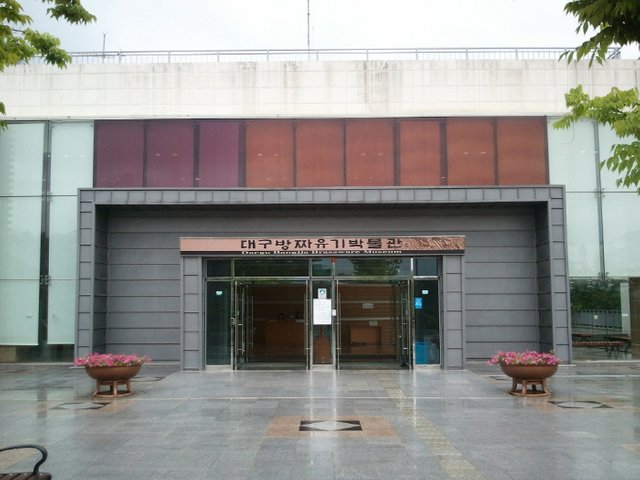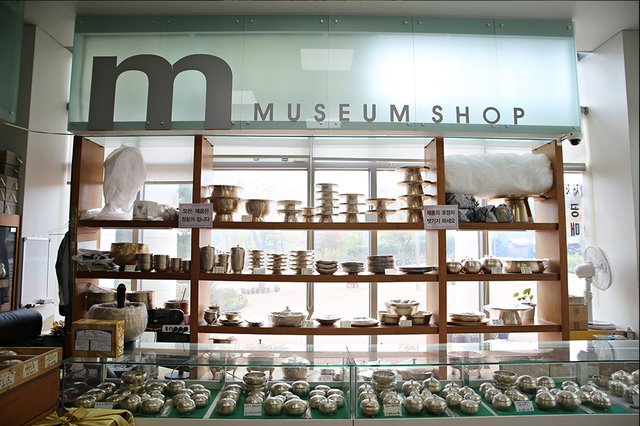[Social Talk] 대구 방짜 유기 박물관
[Social Talk] 대구 방짜 유기 박물관
Daegu Bangjja Yugi(Korean Bronzeware) Museum

놋쇠 덩어리 불에 달구어 망치로 두드려 방짜유기를 이루다
Brass ingots are heated with fire, and pounded with a hammer into Bangjja Yugi.
우리의 전통문화유산인 방짜 유기를 전승 및 보존하고 그 우수성을 알리기 위하여 2007년 개관한 전국에서 유일한 방짜유기 전문박물관입니다. 중요무형문화재 제77호 방짜유기장 이봉주 선생으로부터 방짜 유기와 제작도구 등 1,4889점을 기증받아 소장하고 있으며 박물관은 대구광역시에서 운영하고 있습니다.
The Daegu Bangjja Yugi Museum, opened in 2007, is te only museum of its kind in South Korea to preserve and promote the traditional Korean cultural property known as bangjja yugi (Korean bronzeware). The museum has a large collection comprising 1,489 items including bangjja yugi wares and manufacturing tools, whici was donated by Yu Bong-Ju, Master Artisan of Important Intangible Cultural Property No. 77 Bangjja Yugi. The museum is run by Daegu City.
‘유기’란 놋쇠로 만든 그릇을 말하며 그 중 ‘방짜유기’란 구리와 주석을 78:22 비율로 녹여서 만든 놋쇠 덩어리를 불에 달구어가며 망치질로 두드려 형태를 만든 유기를 지칭합니다. 식기와 제기를 비롯해 각종 생활용품들이 방짜유기로 제작되었으며 특히 징, 꽹과리와 같은 악기류는 오직 방짜기법으로만 만들어집니다.
The term ‘yugi’ refers to vessels made of brass. Bangjja yugi terms are made of brass ingots produced by melting copper and tin at a ratio of 78:22. The ingots are heated with fire and pounded with a hammer into brassware items. Brassware items were used as tablewares, ritual vessels and other housework items. Jing and Kkwaenggwari (Korean gongs) were made using only the bangjja technique.
박물관 전시실은 다양한 종류의 방짜유기 수집품과 작품들, 그리고 영상물을 통하여 유기의 역사, 종류, 제작과정 등에 대하여 관람객들이 쉽게 이해할 수 있도록 구성하였으며. 전시 관람을 통하여 방짜유기의 멋과 우리 조상들의 슬기로움을 느낄 수 있을 것입니다.
The museum’s exhibition rooms feature a wide variety of bangjja yugi items, and videos showing yugi’s the history and many types of yugi, as well was the manufacturing process. The Daegu Bangjja Yugi Museum is the ideal venue to appreciate Korea’s splendid tradition of brassware production.

시설현황
Facility Overview
- 대지면적 : 17,880㎥
- Site are : 17880㎥
- 건축면접 : 3,758㎥ (지하 1층, 지상 2층)
- Building are : 3,758㎥ (one underground level, two aboveground stories)
- 전시실 : 유기문화실, 기증실, 재현실 등 상설전시실 및 기획전시실
- Exhibition rooms : Yugi Room, Donated Items Room, Reproduction Room, and Special Exhibition Room.
- 부대시설 : 영상실, 야외공연장, 체험장 등
- Other Facility : Video Room, Outdoor Performance Stage, and Experience Site.
유기 문화실
Yugi Room
유기문화실은 유기에 대한 관람객들의 전반적인 이해를 돕도록 꾸며진 전시실로 유기의 역사, 종류, 제작과정에 대하여 체계적으로 이해할 수 있도록 구성되어 있습니다. 또한 방짜기법으로 만든 여러 악기들의 소리를 직접 들어볼 수 있도록 하였습니다.
The Yugi Room features diverse displays and exhibits encompassing the history, types, and manufacturing process of yugi (brassware). Visitors can also hear the delightful sounds made by various musical instruments produced using the bangjja technique.
기증실
Donated Items Room
중요무형문화재 제77호 방짜유기장 이봉주 선생이 직접 제작한 작품들 중 특히 예술적 가치가 높은 것들을 선별하여 전시하고 있습니다.
The Donated Items Room features representative works crafted by Yi Bong-Ju, Master Artisan of Important Intangible Property No. 77 Bangjja Yugi (Korean bronzeware).
재현실
Reproduction Room
방짜유기 제작으로 유명하였던 1930년대 평안북도 정주군 납청 마을의 유기공방 모습과 유기가 거래되던 놋점의 모습을 인물모형으로 연출하여 관람객들의 이해를 돕도록 꾸며져 있습니다.
The Reproduction Room features a replica of a famous workshop where bangjja yugi (Korean
bronzeware) was produced and traded in the 1930s. The workshop used to be located in Napcheong Village, Jeongju-gun, Pyeonganbuk-do.
악기
Musical Instruments
악기는 방짜기법의 장점을 가장 잘 보여줄 수 있는 기물로 손꼽히며, 악기제작에 있어 적정한 소리를 민감하게 우러나도록 하는 과정인 ‘울음깨기’는 공정의 핵심기술입니다.
Musical Instruments are the objects for which the production technique can be used to the best effect The production of a best-suited, sensitive sound is the most important element in the process of making instruments.
특대징
Large Jing(gong)
지름이 161츠, 무게가 98kg에 이르는 큰 징으로 소리의 울림이 웅장한 거작품입니다.
With a diameter of 161cm and a weight of 98kg, this large jing (gong) is famous for its vibrantly resonant sound.
좌종
Jwajong (Bell)
불교에서 주로 사용되는 주발 형태의 소리 도구로 종의 윗부분을 막대로 두드려서 소리를 내는데 형태의 특성상 소리가 바깥으로 퍼져나가기 보다는 몸체 안쪽에서 맴돌며 소리의 여운이 오래 지속되는 특징을 가집니다.
Resembling the Buddhist brass rice bowl, this bell is sounded by striking its top part. Characteristically, its sound resonates long and vibrantly.
자바라
Jabara (Small Cymbals)
놋쇠로 만든 2개의 원반을 마주쳐서 소리를 내는 자바라는 인도에서 전해진 악기로 <고려도경>에 자바라와 비슷한 ‘요발’에 관한 기록이 있는 것으로 보아 우리나라에서도 오래전부터 사용해 온 악기임을 알 수 있습니다.
Jabara (a pari of brass discs, i.e., cymbals are sounded bby clashing them together. In Gaoli tujing (Illustrated Account of Goryeo), there is a reference to yobal, an instrument similar to jabara, which originated in India, suggesting that jabara have long been used in Korea.
식기
Tablewares
우리나라에서는 고려시대부터 유기가 식기로써 많이 사용되었는데 “식기로 쓰이는 유기의 재료는 동과 주석만의 합금이었다.”라는 기록에서 보듯이 주물식기보다는 방짜식기가 시기적으로 앞섰음을 알 수 있습니다.
Brass items have been used as table wares since the Goryeo period in Korea. Ancient w indicate that brass table wares were made of an alloy of copper and tin. This suggests that table wares made by the bangjja technique appeared before cast tableware.
연엽주발
Yeonyeop Jubal(Lotus Leaf Brass Bowl)
입구가 바라지고 운두가 나직한 형태의 식기입니다.
A concave tableware item with an outwardly open mouth.
오목주발
Omok Jubal(Concave Brass Bowl)
입구가 좁고 속이 오목한 형태의 식기입니다.
A tableware with a narrow mouth and a concave shape inside.
양푼
Yangpun(Brass Basin)
음식을 담거나 데우는 데 쓰이는 놋그릇으로 방짜기법으로 제작된 양푼을 휘거나 잘 깨어지지 않는 특징을 가집니다.
A brass basin used to contain food. Yangpunn made with the bangjja technique are not easily bent or broken.
새옹
Saeong(Small Braass Pot)
적은 양의 밥이나 죽을 지을 때 쓰이는 작은 솥으로 일반 솥에 비해 바닥과 배가 편평한 형태를 띠며, 당제나 굿 등의 제사 때 직접 밥을 지어 바치는 데 사용 되기도 합니다.
A small flat-shaped brass pot used for cooking food such as porridge. It was also used to cook rice for rituals.
놋동이
Notdongi(Brass Bowl)
놋동이는 떡이나 잔치음식 등을 담는데 주로 쓰이는데 이 놋동이는 동체에 새겨진 용조각이 특징적입니다.
Notdongi were used mainly for containing tteok (Rice cake) and festive foods, and featured carvings of dragons.
제기와 종교용품
Ritual utensils and Religious Items
제사상에 쓰이는 각종 제기류와 불교, 천주교, 무속신앙 등의 종교 의식에서 사용되는 종교용품 중에는 놋쇠로 만들어진 것들이 많습니다.
요령
Yoryeong(Vajra Bell)
불교 의식에서 사용되는 종 모양의 도구로 손으로 잡고 흔들어 청아한 소리를 내게 합니다.
A Buddhist ritual accessory shaped like a bell. It emits a clear sound when held and shaken.
항로와 모사기
Incense Burner and Mosagi (Vessel Containing Sand and Bands)
향로와 향을 피우는 데 쓰이는 화로이며, 모사기는 제사에서 모래와 띠 등을 담는 굽이 높은 그릇을 말합니다.
An incense burner for burning incense. This mosagi is a high-mounted vessel containing sand andbands for rituals.
대종교 제기
Ultensils for the Worship of Dangun (National Founding Father)
대종교 제기 중 원형 제기는 하늘을, 사각형 제기는 땅을, 삼각형 제기는 사람을 의미합니다.
The circular vessel symbolizes heaven; the rectangular vessel, the earth; and the triangular vessel, humans.
용준
Youngjun (Liquor Jar)
종묘제사에 쓰이는 술단지입니다.
A liquor jar used in royal ancestral shrine rituals.
일상생활용품
Everyday Articles.
대야, 주전자, 촛대, 요강과 같이 다양한 종류의 용품들이 놋쇠로 만들어져 사용되어 왔습니다.
촛대
Candle Holder
불을 켜기 위해 초를 꽂아두는 도구입니다
A device for holding a lit candle.
요강
Yogang(bedepan)
여강은 밤에 방에 넣어두고 용변을 보던 실내용 변기입니다. 옛날에는 없어서는 안 될 필수품이었기 때문에 혼수품 중에도 요강이 포함되어 있었습니다.
Yogang is a bbedpan for use in a bedroom. An indispensable item in the past, it was often included on the list of essential wedding gifts.
삭도
Sakdso (Shaving Knife)
승려의 머리카라을 깎는 칼로 방짜쇠로 열처리를 하여 사용하면 실수로 베일 경우에도 독이 오르지 않습니다.
Knife used by monks to shave their hair. Sakdo, which are made of hear-treated bangjja brass, do not cause septicemia if the head is accidentally cut during shaving.
용두주전자
Yongdu(Dragon Head) Kettle
귀때 부분이 용머리 형태로 제작된 것이 특징적인 주전자입니다,
Kettle with dragon head-shaped spout.
관람안내
Information
관람시간
- 10:00 ~ 19:00 (4~10월)
- 10:00 ~ 18:00 (11~3월)
Opening Times - 10:00 ~ 19:00 (April~October)
- 10:00 ~ 18:00 (November~March)
휴관일
- 1월 1일, 설날 및 추석 당일
- 매주 월요일 (월요일이 공휴일인 경우 다음 평일)
Closed
Mondays (If Monday is national holiday, the museum is closed on the following day)
관람료 : 무료
Admission : Free
관람시 주의사항
- 전시물을 손으로 만지는 행위 금지
- 음식물, 애완동물 반입 및 흡연 금지
- 다른 관람객에게 불편을 주는 행위
Cautions! - Please do not touch the exhibits.
- Smoking is strictly prohibited.
- Food, beverages, and pets are strictly prohibited.
- Please do not cause inconvenience to other visitors.
찾아오시는 길
버스 : 급행 1, 팔공1(동화사 방면), 방짜유기박물관 정류장 하차
지하철 : 1호선 아양교역 하차, 2번 출구에서 급행1
승용차 : 경부 고속도로 팔공산 IC -> 우회전 후 직진 -> 팔공산 백안삼거리 -> 동화사 방면 좌회전 -> 1km 직진 후 우회전
Directions to the museum
Bus : Geupheand 1, Palgon 1(For Donghwasa Templ), Get off at Bangjja Yugi Museum Bus Stop
Subway : Get off at Line 1 Ayanggyo Station, Take Geupheang 1 at Exigt 2
Private car : (Gyeonbu Expressway) Palgonsan IC -> Right turn, go straight -> Palgonsan Baegan Three-Way Intersection -> Left turn for Donghwasa Templ -> Go straight 1km, right turn.
대구광역시 동구 도장길 29
29, Dojang0gil(399, Donhak-dong), Dong-gu Daegu
Tel : 053)606-6181~4
Fax : 053-606-6179
예전에 대구의 명소 소개를 위해서 방짜유기박물관 안내문을 보고 만든 소개글입니다.
즐거운 스팀잇 생활하시나요?
무더위야 가라!!!!
짱짱맨 출석부 호출로 왔어요.